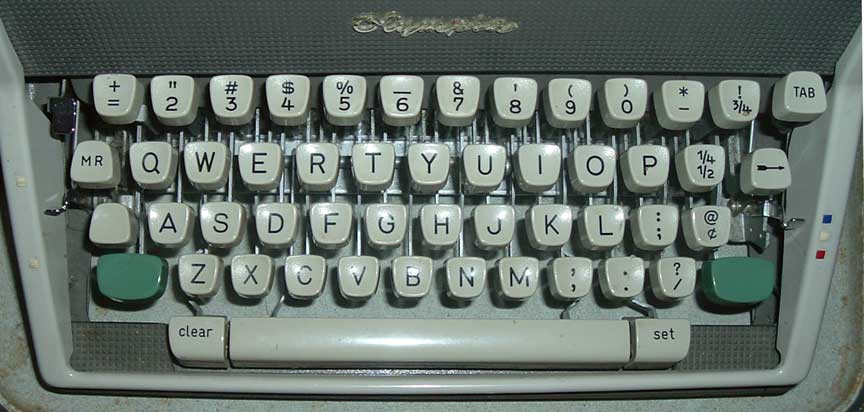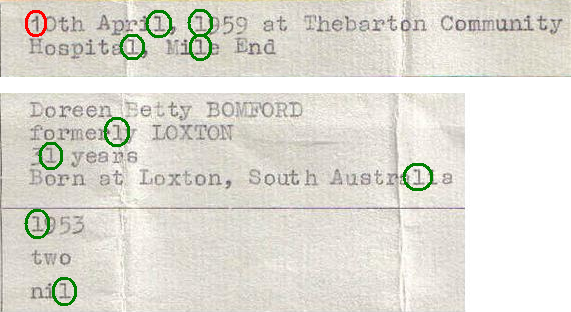
 Not sure if it's relevant. Also, sorry I pinged to you but I couldn't figure out how to just reply to the post without actually pinging someone.
Not sure if it's relevant. Also, sorry I pinged to you but I couldn't figure out how to just reply to the post without actually pinging someone.
 Not sure if it's relevant. Also, sorry I pinged to you but I couldn't figure out how to just reply to the post without actually pinging someone.
Not sure if it's relevant. Also, sorry I pinged to you but I couldn't figure out how to just reply to the post without actually pinging someone.Sorry the layout of my last post is all weird...
l953. Not sure why anybody would type an l instead of a 1 there…Brilliant.....With the other finds by various freepers, this is looking like a total forgery.
really odd? Why and how would that happen?
I think you’ve found a “smoking gun” here! I’m just catching up on all this after a good night’s sleep, but it appears from this and other evidence of the layering that the Australian BC is probably a fake.
Since early typewriters didn’t have ones and zeros, ones were typed as lower case Ls.
Perhaps habit kicked in?
More to the point, the text goes right over folds without a hiccup.
Also, take a look at the spacing in “1959” at the bottom of the document versus the spacing of 1959 throughout the rest of the document. It appears as if the 5 is slightly to the right on the Bomford document in the last 1959.
Could just be a subtle mechanical difference on the typewriter or it could be evidence that the numbers were digitally manipulated in some way...
Just saying.
To me the fact the characters don't follow the folds, but rather appear to float over them is a much bigger indictement. (In fact they, both typed and printed characaters, seem to float over the entire backgroun, it's especially obvious if one reverses the colors in the image.
Notice that Bomford does not say something like, "It even has the same numbers for the place, book and page, the information was recorded." As that is the central item that indicates that one of the documents is a forgery.

Note the missing number "1". Some typewriters had them and some did not, but many typists were accustomed to using lower case "L"s for ones. If the Bomford document is legitimate, which now appears highly unlikely, its typing could have been produced on a typewriter that had a key for the number 1. After one use of that first numerical "1" the Bomford typist could have gone back to using lower case "L"s out of habit.
wndawmn, I believe your discovery is EXTREMELY significant.
The ‘1’ in ‘10th April, 1959’ appears to be a COMPUTER-generated 1 (number one).
If that is true, then the typewriter typeface is a digital version of a typewriter typeface, NOT generated by an authentic typewriter.
Shades of Dan Rather’s IBM Selectric! LOL
I speculate that a forger unwittingly typed the number 1; then when (s)he got to the other instances of the number 1, remembered to type the lower case l (letter ‘el’) because typewriters used the lower case l for the number 1. Likewise, the creator of the Bomford document typed the upper case O (letter ‘oh’) for the number 0 (zero) because typewriters used the upper case O for the number 0.
Right now, to verify my memory, I’m looking at some old recipes I typed on file cards. My beautiful, expensive, German-made Olympia typewriter even provided fractions, but its 1 (one) was definitely a lower case l (el) and its 0 (zero) was definitely an upper case O (oh).
Based on the document’s computer-style 1 (one), I therefore conclude that the Bomford birth registration is a forgery, a FRAUD.
Oops . . . TChad is right. Some typewriters did provide the number 1 (one).
This image shows one of those keyboards:
http://upload.wikimedia.org/wikipedia/commons/8/83/Keyboard_on_a_typewriter.jpg
But . . . if such a typewriter was regularly used for those Australian registration certifications, why was the ‘1’ not used throughout the document? Was the typist a fill-in, a pinch-hitter for the day?

special Thanks for wndawmn666 and Natural Born 54 for pointing this out.